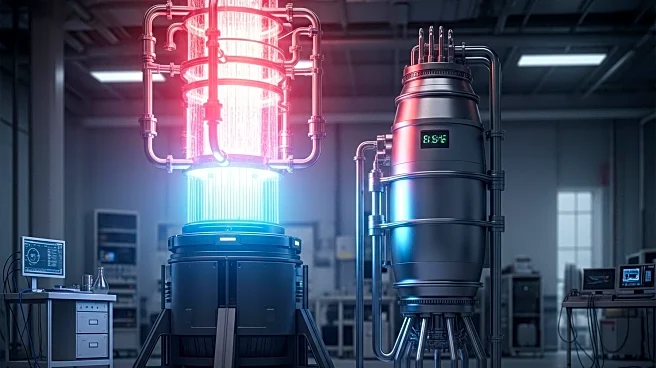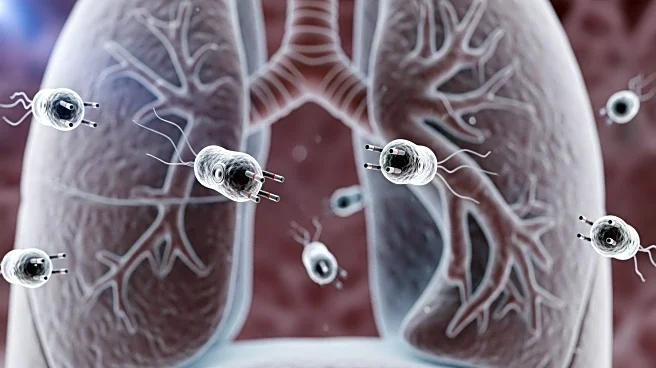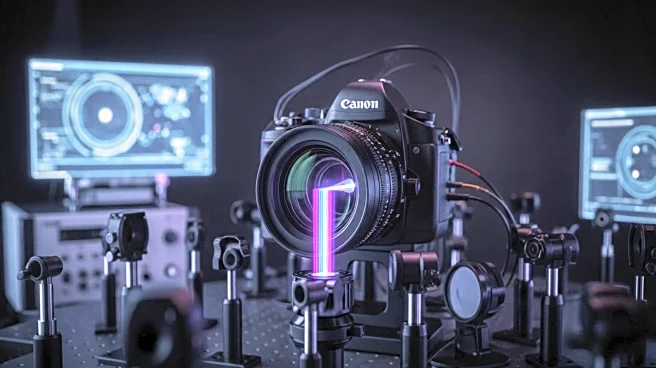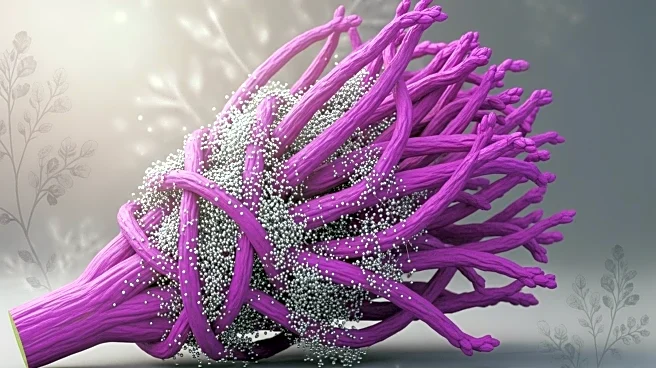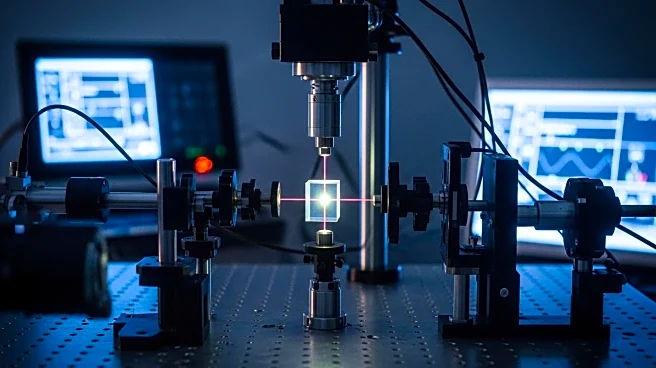What is the story about?
What's Happening?
Researchers have developed a new method to enhance multicolor nanoscopy using photon avalanche in Ho3+-doped nanoparticles. This technique leverages the unique properties of photon avalanche, a phenomenon characterized by ultra-high optical nonlinearity, to achieve sub-diffraction imaging. The study, published in Nature Photonics, highlights the use of parallel photon avalanche (PPA) in holmium ion (Ho3+) doped nanoparticles, which allows for tunable emission spectra. By co-doping with Ce3+/Tm3+, researchers engineered nanoparticles with distinct chromaticity, achieving imaging resolutions of 102 nm and 78 nm in different color channels. This advancement is significant for biophotonic applications, offering a leap in imaging spatial resolution beyond the diffraction limit.
Why It's Important?
The development of photon avalanche in Ho3+-doped nanoparticles represents a significant advancement in the field of biophotonics. This technology enables high-resolution imaging at the nanoscale, which is crucial for studying complex biological systems. The ability to achieve multicolor imaging with sub-diffraction resolution could revolutionize how researchers visualize cellular processes, potentially leading to breakthroughs in medical diagnostics and research. The use of a single wavelength laser for excitation simplifies the imaging process and reduces potential damage to biological samples, making it a promising tool for in vivo applications.
What's Next?
Future research will focus on optimizing the PPA nanoparticles for shorter wavelength excitation to improve imaging resolution and reduce thermal damage. Additionally, integrating sensitizer materials with large absorption cross-sections could lower the excitation threshold, enhancing the practicality of this technology. Researchers are also exploring advanced surface passivation techniques to maintain optical nonlinearity while reducing nanoparticle size, improving biocompatibility. These developments could further expand the applications of photon avalanche technology in biophotonics and beyond.
Beyond the Headlines
The introduction of photon avalanche technology in multicolor nanoscopy could have far-reaching implications beyond immediate scientific applications. It may influence the development of new imaging techniques in various fields, including materials science and nanotechnology. The ethical considerations of using such advanced imaging technologies in biological research will also need to be addressed, particularly concerning data privacy and the potential for misuse in surveillance.
AI Generated Content
Do you find this article useful?


